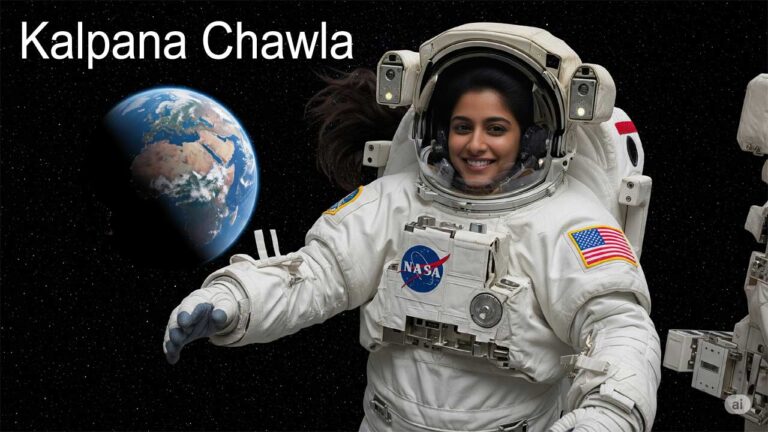Have you ever looked up at the night sky and thought—
“Can I ever reach those stars?”
A young girl in the small town of Karnal, Haryana once asked herself the same question.
She didn’t just stop there.
She grabbed her dreams with both hands, held them tight, and flew straight toward them.
Her name was Kalpana Chawla.
An astronaut.
A trailblazer.
A dreamer who turned her vision into history.
She didn’t just fly into space—she flew into the hearts of millions.
A Small Town Girl with a Sky-Sized Dream
Born in 1962, Kalpana grew up in a modest Punjabi household in Karnal, India.
While other kids played with dolls, she drew sketches of airplanes.
While others looked at stars with wonder, she looked at them with ambition.
When she said, “One day, I will go to space,”
people laughed, dismissed, and ignored.
She smiled quietly and said to herself—
“I’m not just a girl. I am a person with a dream, and that’s enough.”
Red Earth to Blue Suits
Kalpana studied at Tagore Bal Niketan School in Karnal, and later graduated in Aeronautical Engineering from Punjab Engineering College.
She was one of the few women in a male-dominated field.
When asked why she chose this path, she simply said—
“I want to go where girls haven’t gone before.”
Her thirst for knowledge took her to the University of Texas, where she earned her Master’s and PhD in aerospace engineering.
Every exam, every lab report, every late night—
was a quiet promise to herself that one day, she would reach the stars.
NASA’s Call: The First Leap
In 1994, Kalpana Chawla was selected as an astronaut by NASA.
It wasn’t luck.
It was years of passion, discipline, and sleepless nights.
In 1997, she flew into space aboard the Columbia STS-87 mission.
She became the first Indian-born woman in space.
Looking down at Earth, she said—
“From space, the borders vanish. The Earth is one.”
In that moment, she became more than an astronaut—
she became a symbol of unity, resilience, and limitless possibilities.
Second Mission: A Goodbye that Lit the Sky
In 2003, she boarded her second mission — STS-107.
The mission was successful, but tragedy struck on return.
The Columbia space shuttle disintegrated upon re-entry, killing all seven astronauts, including Kalpana.
India mourned.
The world cried.
But her dream didn’t die—it multiplied.
Today, millions of young girls look up and whisper,
“If she could, so can I.”
A Legacy That Doesn’t Fade
Today, schools, scholarships, streets, and research centers bear her name.
She lives on not just in photos and stories, but in every dream a girl dares to dream.
Kalpana showed us that dreams don’t have gender.
They have courage.
And courage never dies.
Close Your Eyes and Picture Her
A young girl, sitting on a rooftop in Karnal.
Sketching a rocket.
Whispering to the stars, “Wait for me, I’m coming.”
Years later, she’s in a NASA space suit, floating in orbit.
Now open your eyes.
Do you still think your dream is too big?
Final Thoughts
Kalpana Chawla wasn’t just a woman who went to space.
She was a revolution wrapped in silence.
She didn’t shout, she acted.
She didn’t rebel loudly—she broke barriers through her work.
Today, when someone tells you,
“You can’t do it,”
remember this—
Kalpana was once a little girl who dared to believe she could.
And she did.
Frequently Asked Questions (FAQ)
Where was Kalpana Chawla from?
She was born in Karnal, Haryana, India.
When did she go to space for the first time?
In 1997, on the Columbia STS-87 mission.
How did she die?
She died in 2003 when the Columbia space shuttle broke apart during re-entry into Earth’s atmosphere.
Why is she so inspirational?
Kalpana defied societal norms, pursued aerospace engineering as a woman, and reached space twice through sheer passion and persistence.
What can we learn from her life?
That no dream is too big, and no girl is too small to chase the stars.

Hmm it appears like your website ate my first comment (it wwas super long) so I guess I’ll just sum it up what I submitted and say, I’m thoroughly enjoying your blog.
I as well am an aspiring blog writer buut I’m still new
tto the whole thing. Do you have any tips for beginner blog writers?
I’d certainly appreciate it.